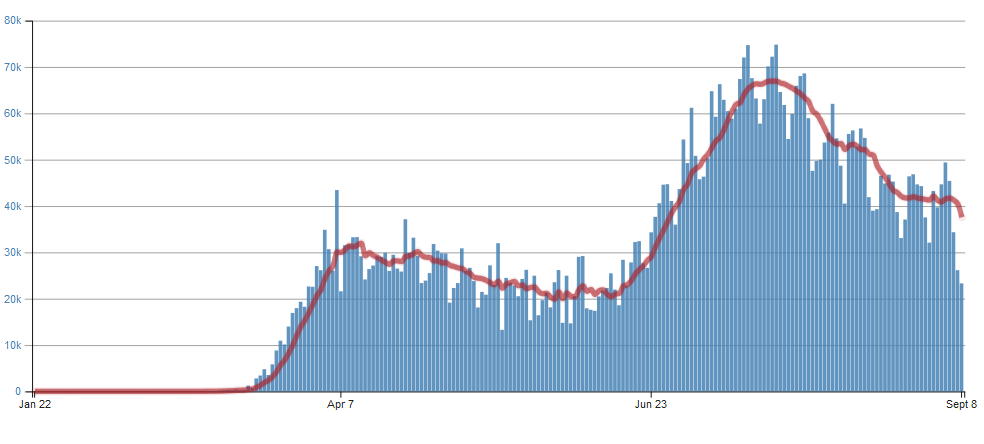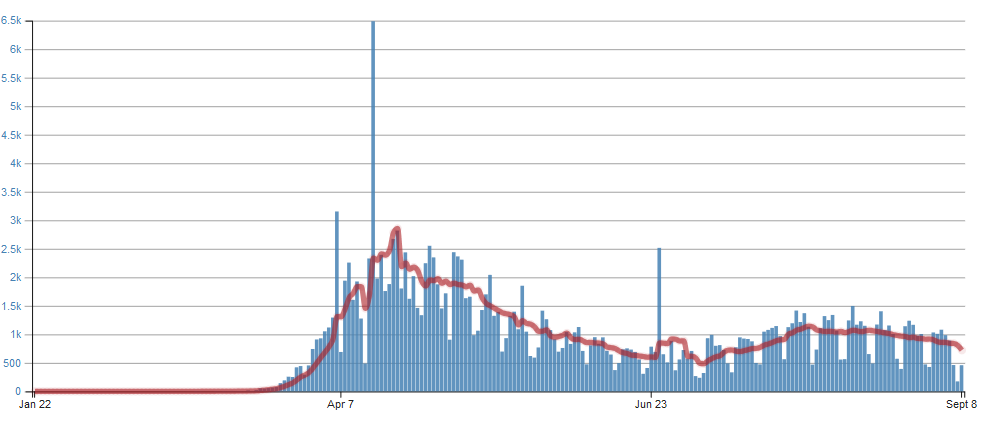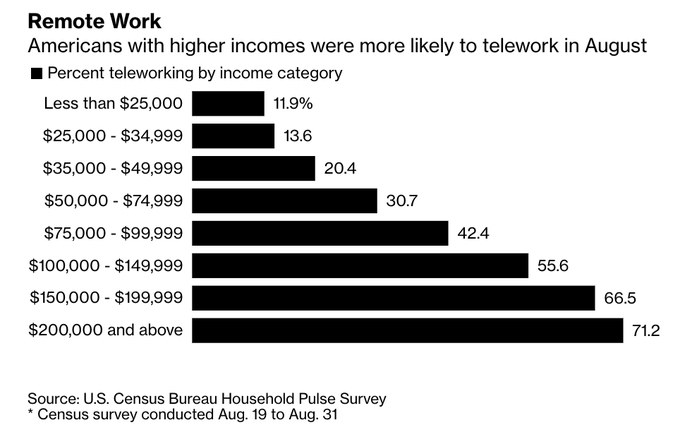by Tony Wikrent
Strategic Political Economy
Some graphs and comments for LABOR DAY
Tony Wikrent September 7, 2020 [Real Economics]
Ganesh Sitaraman, September 10, 2020 [The American Prospect]
As policymakers discuss what industrial policy should look like today, the four traditions in American industrial policy offer important lessons. First and foremost, any public policy that shapes or structures a sector of the economy is an industrial policy, even the Jacksonian approach, which rejects strategic planning in any coherent sense. The choice to let powerful individuals and corporations pursue the industries they want, structure them how they want, and lobby government for ad hoc policy changes is just as much of an industrial policy as anything else, albeit not a very good one. Indeed, the “return” of industrial policy is better described as a rejection of the Jacksonian tradition.
For those who advocate for a new industrial policy, the Hamiltonian tradition offers a natural starting point. But the risks inherent in the Hamiltonian approach should be particularly concerning at this moment. There is already a pervasive view that the system is rigged, captured and corrupted by the powerful. Industry concentration in sector after sector is at an apex, bringing economic and geographic inequality with it. Applying the Hamiltonian approach in narrow areas, like determining supply chain needs or the production of public-health materials in a crisis, is both inevitable and desirable. But the agenda for contemporary Hamiltonians must be more than advocating for industrial policy; it must also be designing policies to prevent regulatory capture, whether as a function of lobbying, the revolving door, or personal friendships and elite culture. Failure to do so threatens greater inequality of wealth and power, and with it, the possibility of oligarchy or another populist backlash.
The Madisonian and Franklinian traditions, meanwhile, are in serious need of revival. Massive public spending in research and development, a public option for broadband and postal banking, and network infrastructure regulation, from tech platform rules to net neutrality, could provide a new foundation for discoveries and commerce. At the same time, antitrust enforcement and the revival of separation-of-function regimes in tech, telecom, banking, agriculture, pharmaceuticals, and other sectors will revitalize competition, enhance innovation, reduce the power of rent-seeking lobbyists, and ensure a more equitable economy through all regions of the country. These two traditions also work together as a system: Government-funded research and regulated network infrastructure provide the foundation and keep the country investing in a longer-term future; a competitive ecosystem sits atop that base, pursuing innovation in a manner that doesn’t concentrate wealth or power.
The challenge for Madisonians and Franklinians is that their traditions have been deliberately attacked for decades by Jacksonians, so much so that they are largely forgotten, and if remembered, much maligned.
“Elon Musk’s growing empire is fueled by $4.9 billion in government subsidies”
[Los Angeles Times, via Naked Capitalism Water Cooler 9-8-20]
“Tesla Motors Inc., SolarCity Corp. and Space Exploration Technologies Corp., known as SpaceX, together have benefited from an estimated $4.9 billion in government support, according to data compiled by The Times. The figure underscores a common theme running through his emerging empire: a public-private financing model underpinning long-shot start-ups. A looming question is whether the companies are moving toward self-sufficiency — as Dolev believes — and whether they can slash development costs before the public largesse ends. Tesla and SolarCity continue to report net losses after a decade in business, but the stocks of both companies have soared on their potential; Musk’s stake in the firms alone is worth about $10 billion. (SpaceX, a private company, does not publicly report financial performance.) Musk and his companies’ investors enjoy most of the financial upside of the government support, while taxpayers shoulder the cost.”
How to Save a Dying Republic: Lincoln and the Greenbacks
Matthew Ehret [TheDuran, via Mike Norman Economics 9-10-20]







